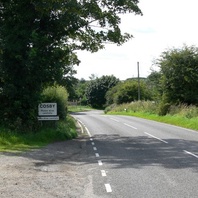
Viking Names
Cosby
The first element of Cosby, in the Guthlaxton Hundred of Leicestershire, is uncertain. It is likely the Old Norse male personal name Kopsi or Kofsi (genitive singular Kofsa) with Kofsa– assimilated to Cossa-. Alternatively the first element could be the Old English male personal name Cos(s)a which appears in such place-names as Cosham, Hampshire, Corsham, Wilshire and Cossington, Leicestershire. The second element is Old Norse by ‘a farmstead, a village’.
Read More

Viking Names
Coston
Coston, in the Framland Hundred of Leicestershire, is a Anglo-Scandinavian hybrid place-name probably coming from the Old Norse male personal name Kátr (genitive singular Káts), presumably an original byname from the Old Norse adjective kátr ‘glad’, combined with the Old English tun ‘an enclosure; a farmstead; a village; an estate’.
Read More
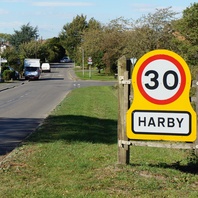
Viking Names
Harby
Harby, in the Framland Hundred of Leicestershire, contains the Old Norse element by ‘farmstead, village’. The first element has been a matter of discussion. The most recent scholarly opinion is that it is most likely from either Old English heorde ‘herdsman’, or Old Norse hjọrð ‘herd’, so either ‘farmstead or village of the herdsmen’ or ‘the herd farm’. For a village of the same name in Nottinghamshire it has also been suggested that the first element is the Old Norse male personal name Herrøðr, though this is now considered less likely.
Read More
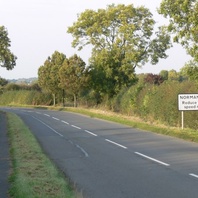
Viking Names
Normanton
Normanton, in the Framland Hundred of Leicestershire, takes its name from the Old English ethnonym Norðman ‘Northman, Norwegian’ and the Old English element tun ‘farm, settlement’. There are several places of this name, predominantly in the East Midlands: five in Nottinghamshire, and some in Derbyshire, Leicestershire, Lincolnshire and Rutland, and one in the West Riding of Yorkshire. The settlement lies in the Vale of Belvoir and previously had the affix in le Vale. Traditionally, the place-name has been interpreted as referring to a settlement of Norwegians (in an area where most of the Scandinavian settlers were Danes). However, the exact implications of such a name are not yet fully understood and are the subject of ongoing work by Dr Jayne Carroll of the Institute for Name-Studies, University of Nottingham.
Read More
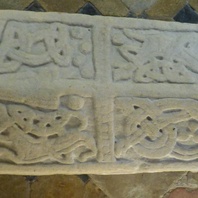
Viking Objects
The Hickling Hogback
The Hickling hogback is a type of Anglo-Scandinavian grave cover in St Luke’s Church, Hickling, Nottinghamshire. It is the most southerly grave cover of this type in England. It appears to have been carved from the remains of a Roman column, hence the notch in the end of it. The stone features Scandinavian Jelling-style decoration indicating an expression of Scandinavian identity and muzzled bears on each end which are thought to be indicators of a pagan identity. However, the stone also features a large cross showing that the commissioners of the carving had a strong interest in expressing the Christian identity of the deceased. As such, this stone is designed to show that the person buried under it was a Christian Scandinavian.
Read More
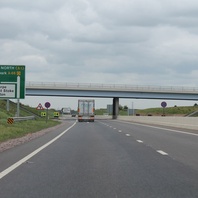
Viking Names
Elston
Elston, in the Newark Wapentake of Nottinghamshire, comes from the Old Norse male personal name Eiláfr or perhaps Eilífr and Old English tun ‘farm, settlement’. It is thus a hybrid name.
Read More
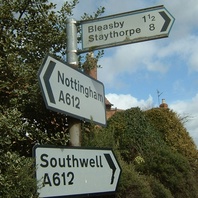
Viking Names
Bleasby
Bleasby, in the Thurgarton Wapentake of Nottinghamshire, was originally Blisetun, probably from the Old Norse male personal name Blesi and the Old English element tun ‘farm, settlement’. It was thus originally a hybrid name, like several others near it, such as Gonalston. By the thirteenth century, the second element had been replaced by Old Norse by ‘farm, settlement’.
Read More
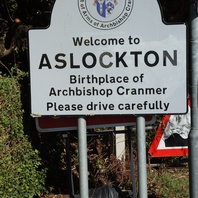
Viking Names
Aslockton
Aslockton, in the Bingham Wapentake of Nottinghamshire, comes from the Old Norse male personal name Áslákr and the Old English element tun ‘farm, settlement’. It is thus a hybrid name like others nearby, such as Thoroton and Colston Bassett.
Read More
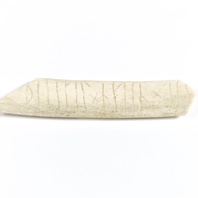
Viking Objects
Reproduction Rune Inscribed Rib
Runes were used not only for monumental inscriptions, or to mark ownership of valuable objects, but also in more informal contexts. In this case the animal bone suggests an after-dinner pastime after a good meal in the Anglo-Scandinavian trading centre of Lincoln. The runes read ——l × hitir × stin × … Only two words of the Old Norse inscription can be read with certainty, and even so they are ambiguous. One possible interpretation is ‘[someone] is heating a stone’ the other is ‘[someone] is called Stein’. The bone is fragmentary, but the inscription may never have been intended to make much sense. The original object dates from around the tenth century. It is one of only three runic inscriptions from the East Midlands.
Read More

Viking Names
Spittlegate
Spittlegate, in the Winnibriggs and Threo Wapentake of Lincolnshire, comes from Middle English spitel ‘a hospital, a religious house, a house of the Knights Hospitallers’ and Old Norse gata ‘a road, a street; a right of way; a right of access to pasture-land; a right of pasturage; an allotment of pasture’. The name is first recorded in 1284 and clearly a post-Viking Age formation, though showing the continued use of originally Old Norse vocabulary in name-giving.
Read More
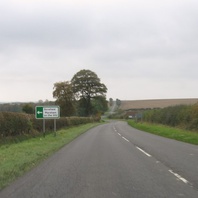
Viking Names
Scrafield
Scrafield, in the Hill Wapentake of Lincolnshire, is probably an Anglo-Scandinavian hybrid from Old Norse skreið ‘a land-slide’ and Old English feld. The latter element has a wide range of meanings in place-names, including ‘open country, unencumbered ground (eg. land without trees as opposed to forest, level ground as opposed to hills, land without buildings)’ and from the late tenth century it also refers to arable land.
